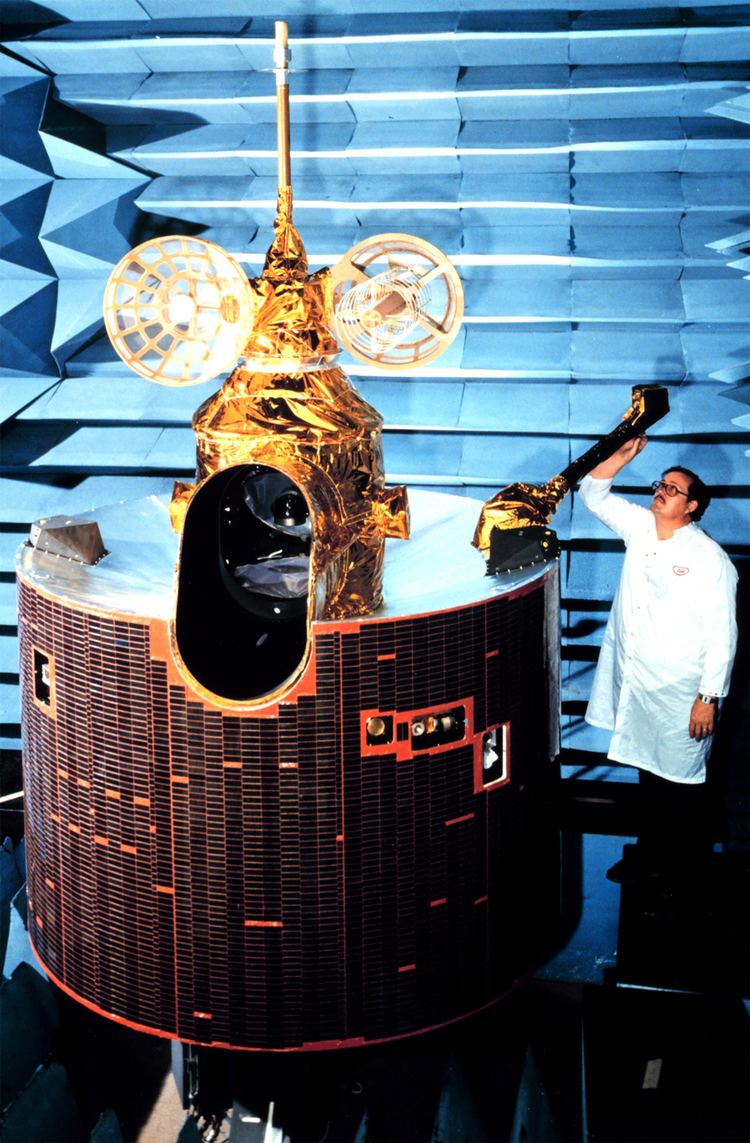SATCAT no. 17561 Inclination 15.09° Period 24 hours Rocket Delta 3000 | COSPAR ID 1987-022A Bus HS-371 Inclination 15.09° Launch date 26 February 1987 Manufacturer Hughes Aircraft Company | |
 | ||
Mission duration 3-7 years (planned)25 years (achieved) Similar GOES 5, GOES 10, GOES 11, GOES 8, GOES 12 | ||
GOES 7, known as GOES-H before becoming operational, is an American satellite. It was originally built as a weather satellite, and formed part of the US National Oceanic and Atmospheric Administration's Geostationary Operational Environmental Satellite system. Originally built as a ground spare, GOES-H was launched in 1987 due to delays with the next series of satellites. It was operated by NOAA until 1999, before being leased to Peacesat, who use it as a communications satellite. As of 2009, it was operational over the Pacific Ocean, providing communications for the Pacific Islands. On April 12, 2012, the spacecraft was finally decommissioned and moved to a graveyard orbit.
Contents
Launch
GOES-H was launched aboard a McDonnell Douglas Delta 3914 rocket, flying from Launch Complex 17A at the Cape Canaveral Air Force Station. The launch occurred at 23:05 GMT on 26 February 1987. The launch had originally been scheduled for late 1986, but was delayed after GOES-G failed to achieve orbit. It was built by Hughes Space and Communications, based on the HS-371 satellite bus, and was the last of five GOES-D series satellites to be launched.
Operations
Following launch, GOES 7 was positioned in geostationary orbit at a longitude of 75° West, where it underwent on-orbit testing before being activated in the GOES-EAST slot of the constellation.
Due to the loss of GOES-G, and delays in the development of the GOES-I series spacecraft, no reserve satellites were available in the late 1980s and early 1990s. After the imager on the GOES 6 satellite failed in 1989, GOES 7 was left as the only operational GOES satellite. It was moved to 98° West to cover the whole of the continental United States. In 1992, Meteosat 3 was leased from Eumetsat to take over GOES-EAST operations, allowing GOES 8 to be moved 112° West. When GOES 8 entered service in 1995, it replaced Meteosat 3, and GOES 7 was moved to the GOES-WEST position at 135° West. It remained in service until its retirement from service in 1996, at which time it was moved to 95° West. It was then transferred to Peacesat, and positioned at 175° West until its final retirement and disposal in 2012.
It is the only satellite to have been operated as both GOES-EAST and GOES-WEST in the course of normal operations. GOES 10 has been used as both GOES-EAST and GOES-WEST, however its operations as GOES-EAST were as a backup during an outage of GOES 12, and the satellite was not moved to the GOES-EAST orbital position.
